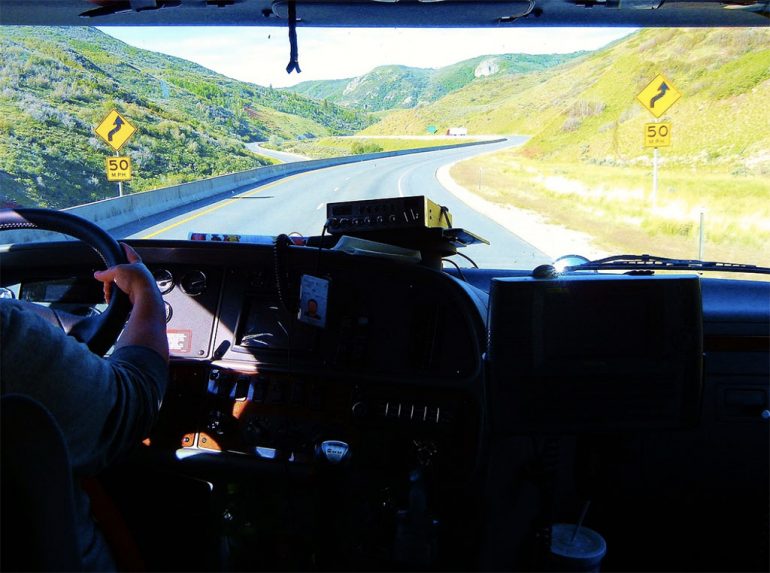
Obtaining a Commercial Driver’s License in the U.S. can open up a whole new world of career opportunities. So, let’s explore the three different levels of CDLs – you will then be well-informed so that you can determine which level is right for you.
A Class A CDL permits you to drive certain categories of heavy vehicles. This license is specially built for truck drivers. If you are interested in a safe long-haul trucking career or specific jobs that require handling large vehicles, this license might be the right fit for you.
The Class A CDL authorizes drivers to operate any combination of vehicles with a Gross Combination Weight Rating of 26,001 pounds or more. This includes the towing of trailers or other vehicles over 10,000 pounds.
For example, tractor-trailers, truck and trailer combinations, and tank vehicles are all covered under this license.
If your professional aspirations lead you towards operating medium-sized vehicles, then a Class B CDL could be what you need. This license allows drivers to operate single vehicles with a Gross Vehicle Weight Rating of 26,001 pounds or more – or tow vehicles not exceeding 10,000 pounds.
Vehicles such as city buses, tour buses, delivery vans, and garbage trucks fall under this classification. People considering jobs in local transportation or certain kinds of manual labor could see great benefits from holding a Class B CDL.
This type of CDL opens doors to those looking to operate smaller specialized vehicles that are not covered under Classes A and B. Any vehicle designed to transport 16 passengers or more (including the driver) or hazardous cargo is classified under the Class C CDL.
This CDL enables drivers to operate smaller buses and vehicles used in transporting hazardous waste.
Earning a Commercial Driver’s License involves several challenging stages – regardless of the level you choose – but with a bit of dedication and perseverance, obtaining the license is within your reach.
Start by determining the type of commercial driving you want to do. Choose one based on your career interests – as each caters to different vehicle sizes and purposes, as we have seen.
Next, obtain a copy of your state’s CDL manual and thoroughly study it. It contains crucial information about driving laws and safety regulations. You will then have to pass a written test that evaluates your understanding of the road rules and regulations contained in the manual.
Additionally, you will require a Federal Motor Carrier Safety Administration medical certification. This involves a physical examination to ensure you are healthy enough to handle driving a large vehicle.
Driver training comes next. Look for a reputable driving school that offers specialized CDL classes at your chosen level, such as Class A CDL training. You will gain hands-on experience and skills to maneuver large vehicles and learn safety operations.
After successfully completing your training, it is time to take the skills test – which includes vehicle inspection, basic controls, and on-road driving.
Finally, upon passing the skills test, you will receive your CDL. However, keep in mind that rules may vary from state to state – so be prepared for additional specific requirements depending on where you live.
Understanding and choosing the correct CDL for your career aspirations is crucial. Whether it is navigating long-haul trucking with a Class A, operating medium-sized vehicles with a Class B, or handling smaller specialized vehicles with a Class C, make sure to follow the steps outlined to obtain your particular license.
Your path to new career opportunities begins with acquiring a well-matched CDL.

Automotive Addicts Contributors are a collective of guest writers, industry professionals, and passionate enthusiasts who bring fresh perspectives to the Automotive Addicts platform. Focused on delivering timely news, in-depth reviews, and unique insights, these contributors help keep the site dynamic and engaging. Many use the platform to expand their reach and build credibility within the automotive media world, adding depth and variety to the content that drives the Automotive Addicts community.